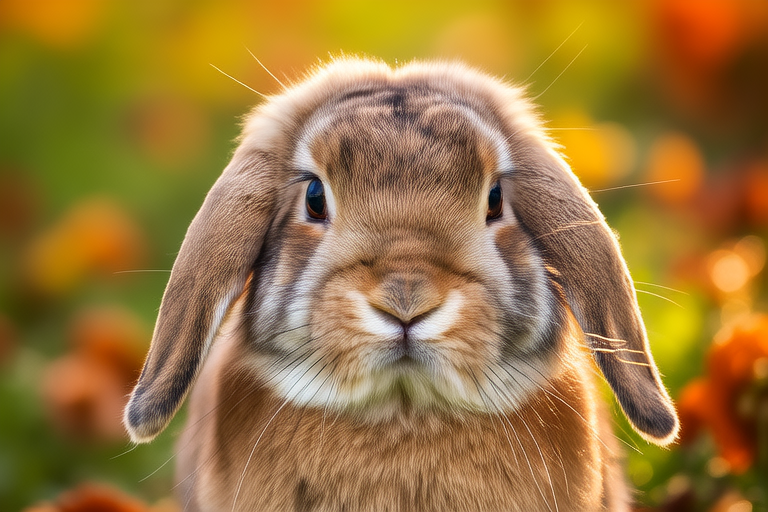Lop Rabbits Unleashed: Discover Their Unique Traits and Needs
With their endearing floppy ears and gentle demeanor, it’s no wonder lop rabbits have become one of the most popular pet choices for families around the world. These charming creatures offer companionship, entertainment, and a unique bond that many find irresistible. Whether you’re a seasoned rabbit owner or considering adding a lop rabbit to your family, understanding their distinct characteristics, needs, and behaviors is crucial for providing them with a happy, healthy life.
Distinctive Physical Traits
Lop rabbits are renowned for their long, drooping ears that give them their signature look. However, these rabbits come in various breeds, each with its own set of features. The French Lop, for instance, is known for its large size and robust build, while the Holland Lop is smaller and more compact. Other popular breeds include the Mini Lop and the English Lop, each with its own charm and appeal.
Their coats can range from short and smooth to longer and fluffier, depending on the breed. Some lop rabbits have solid colors, while others display striking patterns. Regardless of their appearance, all lop rabbits share a soft, velvety coat that requires regular grooming to keep it healthy and free from mats.
Temperament and Interaction with Humans
Lop rabbits are generally known for their calm and friendly nature, making them excellent pets for families with children. They tend to be docile and enjoy gentle handling, which can foster a strong bond between the rabbit and its human companions. While they are social animals, lop rabbits can also be independent and prefer quiet environments.
Interacting with your lop rabbit regularly helps strengthen this bond. Spend time petting them, offering treats, and allowing them to explore their surroundings under supervision. This interaction not only builds trust but also ensures your rabbit remains comfortable and content.
Dietary Needs
A balanced diet is essential for maintaining the health of your lop rabbit. A diet rich in hay forms the foundation of their nutritional needs, providing necessary fiber for digestion and dental health. Fresh vegetables and fruits should be offered in moderation, ensuring a variety of nutrients. It’s important to introduce new foods gradually to avoid digestive upset.
Commercial rabbit pellets can be included in their diet, but they should not make up the majority of their food intake. Water should always be available, and bowls should be cleaned regularly to prevent contamination.
Housing Requirements
Creating a suitable living environment for your lop rabbit is crucial for their well-being. A spacious indoor cage with plenty of room for movement and exploration is ideal. The cage should be equipped with bedding material such as straw or shredded paper, which provides comfort and helps maintain cleanliness. Regular cleaning of the cage is necessary to prevent odor and bacterial growth.
In addition to their indoor space, lop rabbits benefit from having access to a secure outdoor area where they can play and exercise. This space should be predator-proof and provide shade during hot weather. Ensure there are no toxic plants or substances within reach, as these can pose serious health risks.
Exercise Essentials
Regular exercise is vital for the physical and mental health of your lop rabbit. Providing toys and tunnels within their living space encourages movement and stimulates their curiosity. Supervised playtime outside their cage allows them to stretch their legs and engage in natural behaviors like digging and hopping.
It’s important to monitor your rabbit during exercise sessions to ensure their safety and prevent accidents. Always supervise when they are in an unfamiliar environment to protect them from potential hazards.
Grooming, Health Care, and Behavioral Issues
Grooming your lop rabbit is an essential part of maintaining their health and appearance. Regular brushing helps remove loose hair and prevents matting, especially during shedding seasons. Pay special attention to their ears, keeping them clean and free from debris. Trim their nails regularly to prevent overgrowth, which can cause discomfort and hinder movement.
Health care for lop rabbits includes routine veterinary check-ups to identify and address any potential issues early. Common health problems include dental issues, gastrointestinal disorders, and respiratory infections. Familiarize yourself with the signs of illness so you can act promptly if your rabbit becomes unwell.
Behavioral issues can arise if your lop rabbit feels neglected or bored. Providing mental stimulation through toys and activities can help alleviate these issues. If your rabbit exhibits destructive behavior, such as chewing on furniture or digging excessively, redirect their energy into appropriate outlets like chew toys or digging boxes.
Adopting a Lop Rabbit
If you’re ready to welcome a lop rabbit into your home, consider adopting from a reputable breeder or rescue organization. These sources often provide thorough background information on the rabbit’s history and temperament, helping you make an informed decision.
When meeting potential rabbits, take your time to observe their behavior and interact with them. Look for signs of comfort and engagement, and ask questions about their health and care requirements. Once you’ve found the perfect match, prepare your home by setting up their living space and gathering necessary supplies before bringing them home.
Welcome your new furry friend with open arms and a willingness to learn. With proper care and attention, your lop rabbit will bring joy and companionship to your life for years to come.
